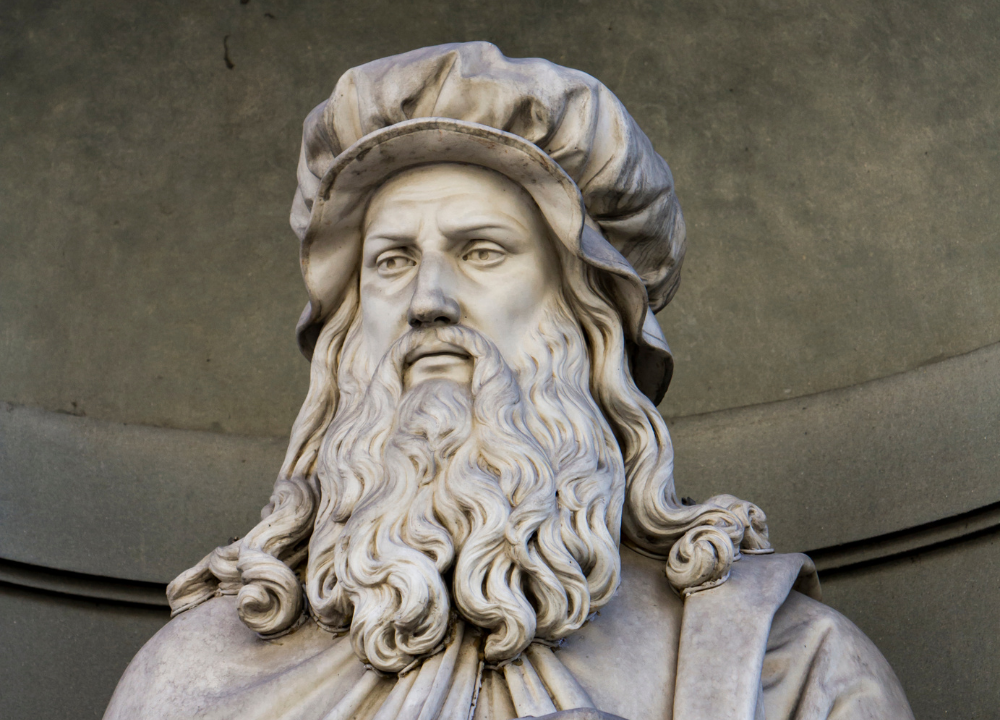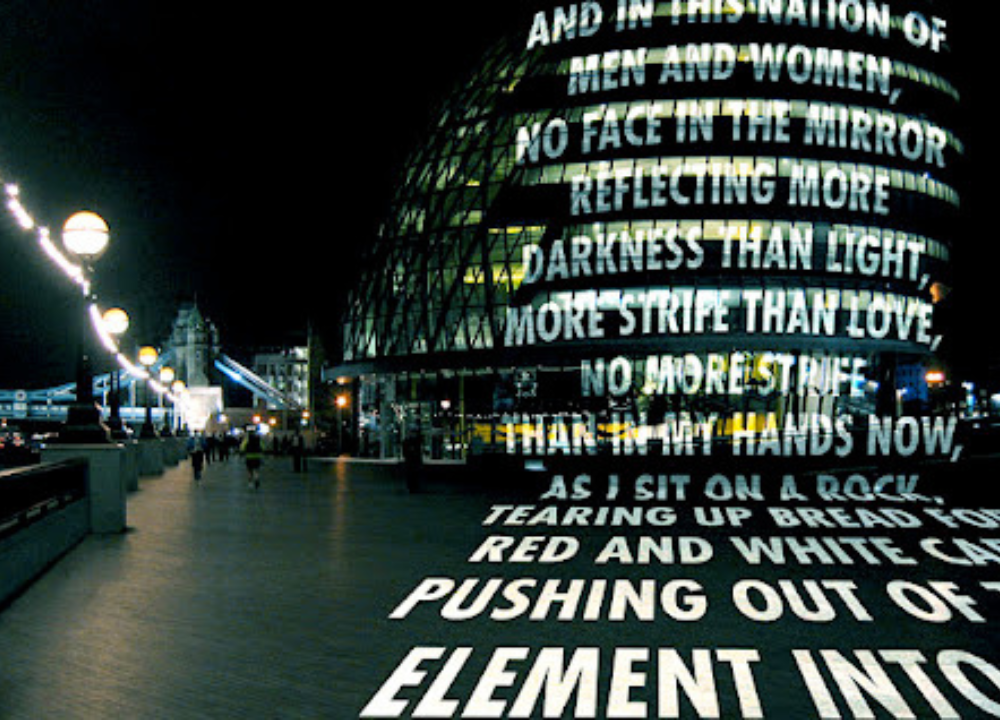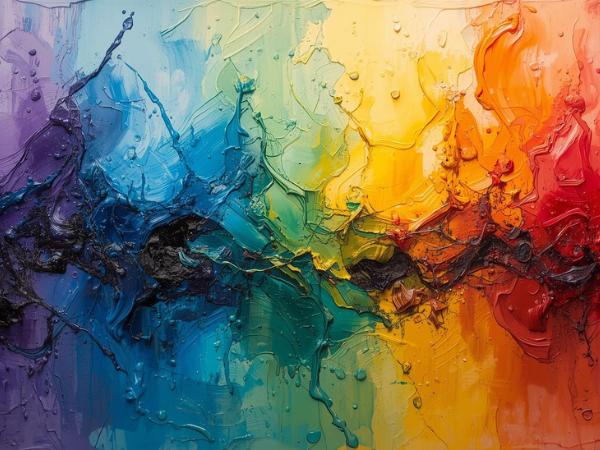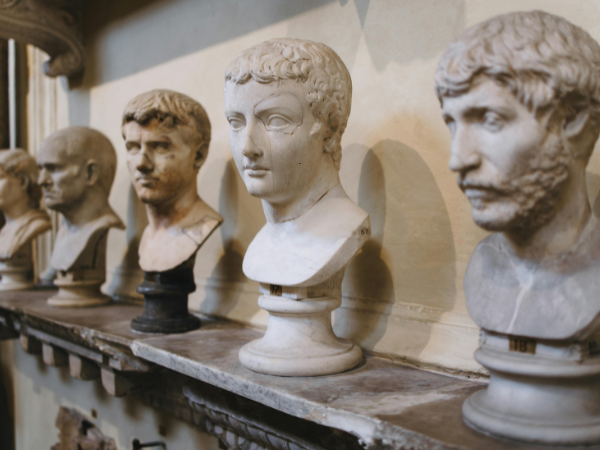Leonardo da Vinci, a genius of his time, had a mind that embodied endless curiosity and unparalleled creativity.
Leonardo’s Artistic Journey
Leonardo da Vinci, renowned as one of the greatest geniuses in history, left an indelible mark on the world through his remarkable artistic journey. His paintings are known for their extraordinary attention to detail, mastery of composition, and the profound emotions conveyed through each brushstroke. Let’s delve into three iconic masterpieces that exemplify Leonardo’s artistic genius.
The Beginnings Of A Genius
Leonardo’s artistic journey began in his youth, where his remarkable talent first came to light. A prodigious artist even as a child, he showed an early inclination for sketching the world around him, capturing its essence with astounding precision. His meticulous observations and dedication to honing his craft laid the foundation for the brilliance to come.
The Mona Lisa
Hailed as the epitome of Renaissance portraiture, the Mona Lisa remains a timeless enigma, captivating audiences for centuries. Leonardo’s deft hand in capturing the elusive smile and the subtle interplay of light and shadow infuses the painting with an aura of mystique. The Mona Lisa’s beguiling gaze draws viewers into her world, leaving them enthralled by the intricacies of Leonardo’s artistic finesse.
The Last Supper
Regarded as one of the most influential religious paintings of all time, The Last Supper showcases Leonardo’s ability to evoke deep emotions through his art. This monumental fresco depicts the climactic moment when Jesus reveals the betrayal of one of his disciples. Leonardo’s impeccable use of perspective, coupled with his keen attention to the expressions and gestures of the figures, conveys the tension and solemnity of the occasion, immersing the viewer in the profound significance of the scene.
Now, let us briefly summarize the key aspects of Leonardo’s artistic journey:
- Leonardo’s early talent and dedication laid the groundwork for his incredible artistic abilities
- The Mona Lisa mesmerizes with its enigmatic smile and intricate details
- The Last Supper evokes profound emotions through its remarkable composition and use of perspective
Leonardo da Vinci’s artworks continue to inspire awe and admiration, serving as a testament to the extraordinary mind of a genius.
Leonardo’s Scientific Pursuits
Leonardo da Vinci, widely known as a brilliant artist, was also a remarkable scientist and inventor. His insatiable curiosity and relentless pursuit of knowledge led him to explore various scientific disciplines. In this section, we will delve into three of Leonardo’s scientific endeavors: Anatomy and Medicine, Engineering and Mechanics, and the Study of Flight. Let’s examine each of these fields and discover how Leonardo’s genius impacted them.

Anatomy And Medicine
Leonardo’s fascination with the workings of the human body was evident in his comprehensive studies of anatomy and medicine. He embarked on a journey to unravel the mysteries of the human form, dissecting cadavers to gain a deeper understanding of anatomy. Through meticulous observations, he documented detailed sketches and groundbreaking discoveries, paving the way for future advancements in medical science. Leonardo’s pioneering work laid the foundation for modern anatomical studies, revolutionizing the way we understand and treat the human body. His anatomical drawings, characterized by their accuracy and intricacy, remain invaluable resources in the medical field.
Engineering And Mechanics
Leonardo’s brilliance extended beyond the realm of art into the field of engineering and mechanics. He had an innate ability to conceptualize and design innovative machines and structures. Whether it was inventing a flying machine, designing architectural wonders, or creating intricate mechanical devices, Leonardo’s engineering genius knew no bounds. His sketches and blueprints manifest his remarkable imagination and foresight. Although many of his designs were never realized during his time, they served as a blueprint for future inventions and have inspired generations of engineers and inventors.
Study Of Flight
Leonardo’s relentless curiosity drove him to study the mechanics of flight. Fascinated by the ability of birds to soar through the skies, he devoted considerable time and effort to understanding the principles of aerodynamics. Through his observations and meticulous note-taking, Leonardo developed a deep understanding of air currents, wing movement, and the principles of flight. His intricate drawings and conceptualizations of flying machines demonstrate his visionary thinking. While his designs for practical flying machines were not realized, his contributions to the field of aeronautics were significant, paving the way for future advancements in aviation.
Leonardo da Vinci’s scientific pursuits encompassed a wide range of fields, making him a true Renaissance polymath. His curiosity, keen observation, and analytical thinking enabled him to make groundbreaking contributions to anatomy, medicine, engineering, and the study of flight. Today, Leonardo’s scientific legacy lives on, inspiring countless individuals to push the boundaries of knowledge and explore the wonders of the world.
The Multifaceted Mind
Explore the multifaceted mind of the genius, Leonardo Da Vinci, as we delve into his fascinating biography. Discover the limitless creativity, remarkable intellect, and insatiable curiosity that propelled him to become one of the greatest artists and thinkers in history.
Philosophy And Human Nature
Leonardo da Vinci’s multifaceted mind went beyond his artistic abilities. He was not only a painter but also a philosopher who delved into understanding human nature.
Leonardo Emphasized the Importance of Observation: In order to understand human nature, Leondardo believed that observation was essential. He thorougly studied anatomy and examined the movements and expressions of the human body.
Deep Interest in Physiognomy: Leonardo was keenly interested in physiognomy, the study of facial features and expressions that reveal personality traits. He believed that the physical appearance of a person provided insight into their emotions and character.

Inventions And Innovations
Leonardo da Vinci’s genius not only shines through his artworks, but also in his inventions and innovations.
Engineering Marvels: He designed impressive machines ahead of his time, including the helicopter and the airplane. Leonardo was also fascinated by mechanics, producing drawings of complex wheel systems and various types of machinery.
Scientific Inquiries: Leonardo was an avid investigator and conducted numerous scientific experiments to understand the world around him. His studies in botany, geology, anatomy, and hydrodynamics contributed to advances in various fields. He also produced precise and detailed algorithms for calculations in mathematics.
Leonardo’s Impact
Leonardo da Vinci’s genius went beyond his impressive collection of paintings and technical drawings. His influence extended far beyond his own lifetime, shaping the worlds of art, science, and culture. Let’s explore the remarkable impact this Renaissance polymath had on various fields.
Influence On Art
Leonardo’s contributions to art were groundbreaking and continue to inspire artists to this day. His mastery of techniques such as sfumato and chiaroscuro brought a new level of realism and depth to artworks. Leonardo’s ability to perfectly capture human emotions and expressions imbued his paintings with a sense of life and authenticity.
Furthermore, his attention to detail and anatomical accuracy revolutionized the way artists approached their craft. He dissected human bodies, studied the motion of muscles, and explored the intricacies of the human form, enabling him to depict human anatomy with unprecedented precision.
Leonardo’s paintings, including the iconic “Mona Lisa” and “The Last Supper,” continue to captivate audiences with their enigmatic beauty and emotional impact. His unique artistic style and visionary approach paved the way for countless artists who followed in his footsteps.
Influence On Science
Leonardo da Vinci was not only a talented artist but also an insatiable inquirer and observer of the natural world. His scientific studies and observations spanned a wide range of disciplines, from anatomy and botany to engineering and astronomy.
Leonardo’s detailed anatomical investigations enabled him to depict the human body accurately. He produced intricate drawings of the human skeleton, muscles, and internal organs, making significant contributions to the field of medical science.
His mechanical designs and engineering concepts foreshadowed modern inventions, revealing his forward-thinking mindset. He envisioned flying machines, submarines, and even a primitive version of a tank, showcasing his remarkable creativity and understanding of mechanics.
Moreover, Leonardo’s scientific notes and observations on geology, paleontology, and astronomy were ahead of his time. He meticulously recorded his observations of fossils, rock formations, and celestial bodies, laying the groundwork for future scientific discoveries.
Cultural Legacy
Leonardo da Vinci’s cultural legacy reverberates through the centuries, transcending his individual achievements. He embodied the spirit of the Renaissance with his insatiable thirst for knowledge, intellectual curiosity, and passion for exploration.
His groundbreaking ideas and artistic innovations influenced subsequent generations of artists, scientists, and thinkers. Leonardo’s multidisciplinary approach, combining art and science, remains an inspiration for those who dare to push the boundaries of creativity and knowledge.
His work serves as a reminder that true genius knows no boundaries and that a curious mind can change the world. Leonardo da Vinci’s lasting influence can be felt in museums, classrooms, and scientific laboratories worldwide, as his ideas and discoveries continue to shape our understanding of art, science, and the human experience.
Lesser-known Aspects Of Leonardo
While Leonardo da Vinci is renowned for his artistic masterpieces, there are several lesser-known aspects of his life that deserve recognition. In addition to his remarkable paintings and inventions, Leonardo had a multifaceted mind that to this day continues to astonish the world. This section will shed light on two fascinating aspects of his genius: music and poetry, as well as literature and philosophy.
Music And Poetry
Leonardo’s creative prowess extended beyond the realms of visual art. Few people are aware of his ability to captivate audiences through his musical and poetic talents. Despite primarily being recognized as a painter, Leonardo had a deep appreciation for music. He believed that music possessed the power to touch the soul and stimulate the imagination.
Leonardo’s musical compositions were enchanting, resonating with his listeners on a profound level. His keen understanding of harmony and rhythm allowed him to compose melodies that effortlessly flowed through the air. Although not as widely recognized as his paintings, his musical contributions demonstrate the breadth of his artistic genius.
In addition to his musical abilities, Leonardo had a way with words. He had a knack for crafting exquisite poetry that conveyed his thoughts and emotions with grace. His poems, often influenced by his observations of nature and human experiences, exhibited a profound understanding of the human condition.
Leonardo’s talent for both music and poetry added another dimension to his creative mastery. The combination of his visual artistry with his melodic compositions and lyrical verses exemplifies his extraordinary ability to express himself through multiple artistic outlets.
Literature And Philosophy
In addition to his prowess in the arts, Leonardo da Vinci was also an avid reader and a deep thinker. He immersed himself in the world of literature and philosophy, constantly challenging himself to explore new ideas and concepts.
Leonardo’s literary interests spanned a wide range of topics, from science and astronomy to history and mythology. He voraciously consumed knowledge, drawing inspiration from ancient tomes and contemporary works alike. His insatiable thirst for learning fueled his imagination and nurtured his inquisitive nature.
Furthermore, Leonardo was not content with merely absorbing information; he actively engaged with philosophy, pondering the fundamental questions of existence and the nature of the universe. His philosophical musings shaped his worldview and influenced his artistic endeavors, giving his works a depth that transcends mere aesthetics.
In conclusion, Leonardo da Vinci’s genius extends far beyond his iconic paintings. His extraordinary talents in music and poetry, coupled with his deep engagement in literature and philosophy, showcase the immense breadth of his intellectual capabilities. Leonardo’s diverse pursuits contribute to his lasting legacy as not only an esteemed artist but also as a polymath whose insatiable curiosity propelled him to explore the boundless realms of human creativity.
Conclusion
Ultimately, Leonardo Da Vinci’s life and work exemplify the astonishing capacities of a genius. From his unparalleled artistic talent to his insatiable curiosity for science and innovation, Da Vinci’s brilliance knew no bounds. His unique approach to art and his relentless pursuit of knowledge have left a lasting impact on countless generations.
Exploring the mind of this extraordinary individual offers valuable insights into the limitless possibilities of human creativity and intellect. Embracing his legacy encourages us all to cultivate our own genius and push the boundaries of what we can achieve.




